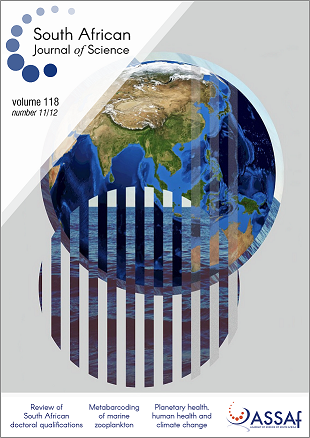Metabarcoding of zooplankton to derive indicators of pelagic ecosystem status
DOI:
https://doi.org/10.17159/sajs.2022/12977Keywords:
barcoding reference databases, climate change, essential ocean variables, ocean observations, zooplankton biodiversityAbstract
Zooplankton play a key role in marine food webs and carbon cycling and are useful indicators of climaterelated changes and ocean health in pelagic ecosystems. Zooplankton are traditionally identified to species through microscopy, but new molecular techniques have enabled the identification of individual specimens (DNA barcoding) or multiple species in the same sample (DNA metabarcoding). Metabarcoding has been tested and refined using zooplankton collected in South African waters for the first time. Challenges to the implementation of DNA-based methods to measure zooplankton biodiversity easily and routinely include an incomplete DNA barcode reference library, logistical complexity and uptake of the new technology by environmental management agencies. These challenges call for a national effort to intensify zooplankton barcoding initiatives and to effectively engage stakeholders in developing a roadmap towards application of DNA-based methods in marine environmental management.
Significance:
- Metabarcoding has been successfully applied to marine zooplankton for the first time in South Africa, demonstrating its potential as a tool to generate ecosystem indicators during routine ocean observations.
- National barcoding efforts must be intensified to provide a comprehensive reference library of zooplankton DNA.
- Effective engagement with stakeholders is required to overcome logistical and policy challenges, and to provide a roadmap towards application of DNA-based methods in marine environmental management.
Downloads
Published
Issue
Section
License

All articles are published under a Creative Commons Attribution 4.0 International Licence
Copyright is retained by the authors. Readers are welcome to reproduce, share and adapt the content without permission provided the source is attributed.
Disclaimer: The publisher and editors accept no responsibility for statements made by the authors
How to Cite
- Abstract 1001
- PDF 927
- EPUB 222
- XML 440
- Supplementary material 132












.png)